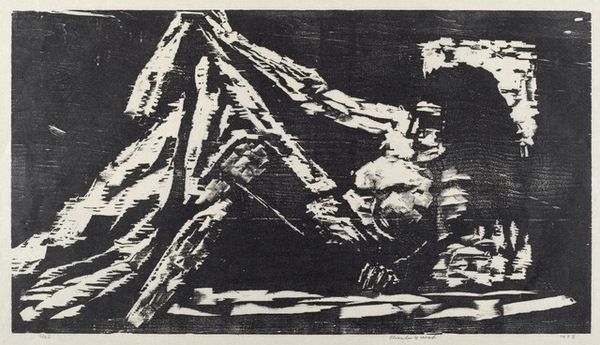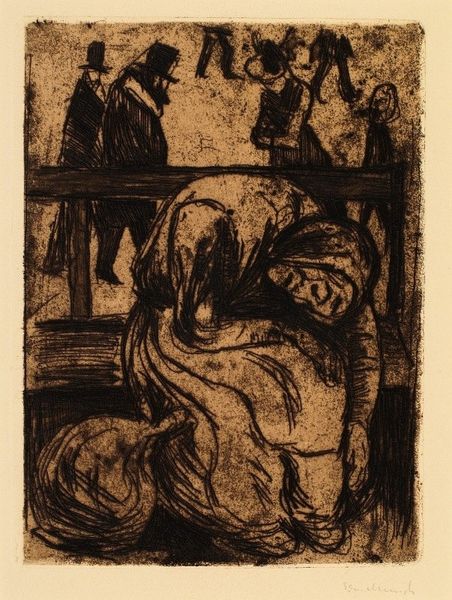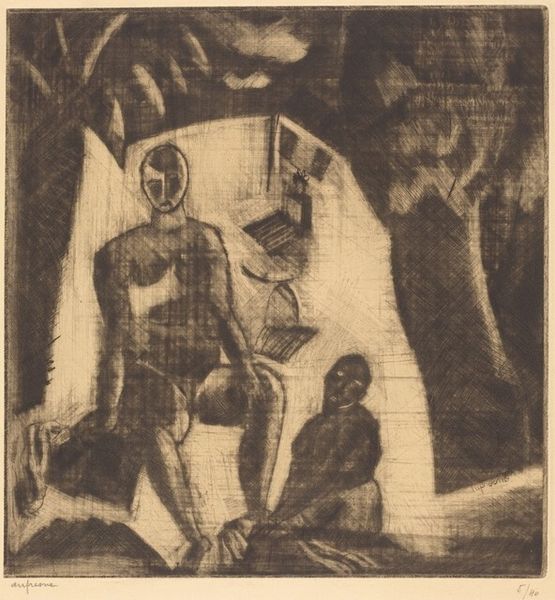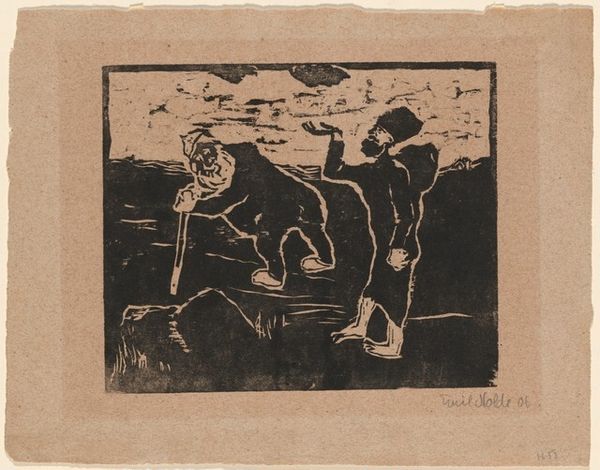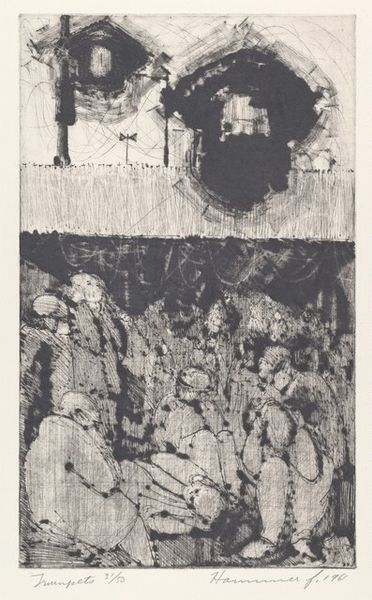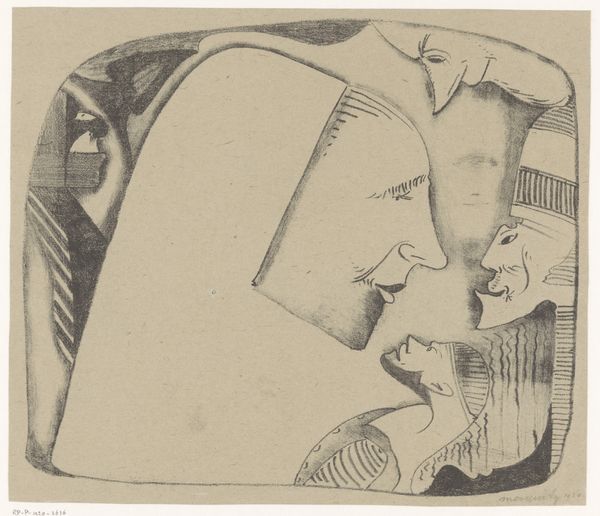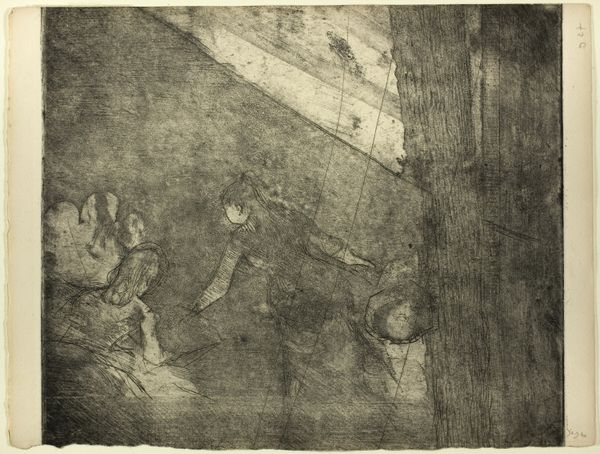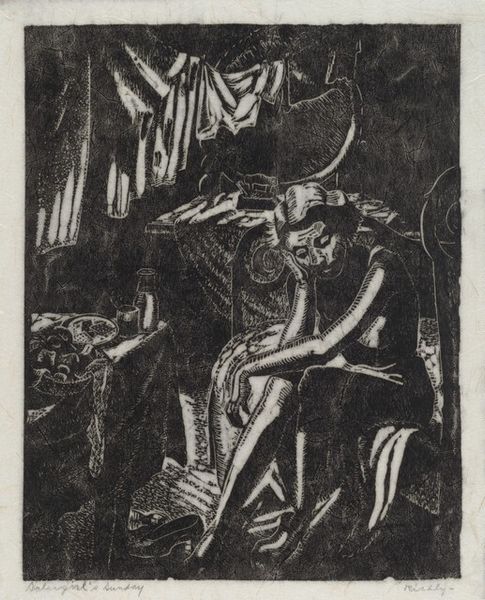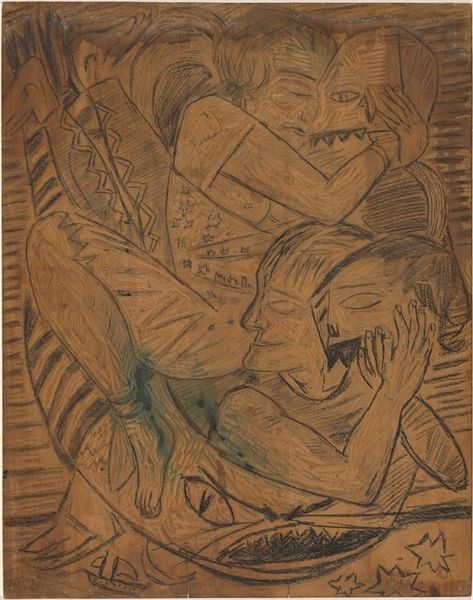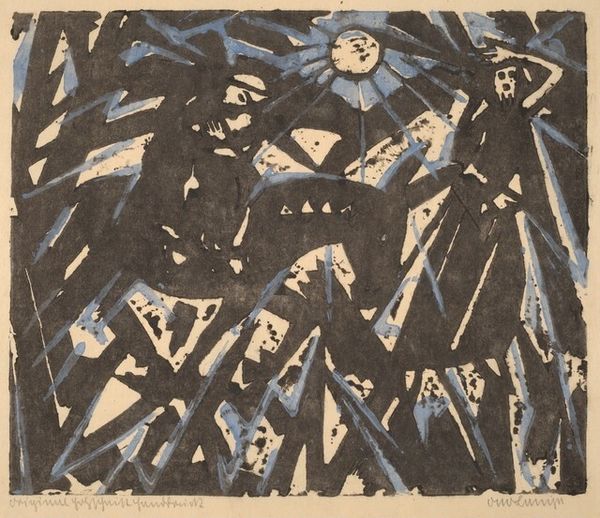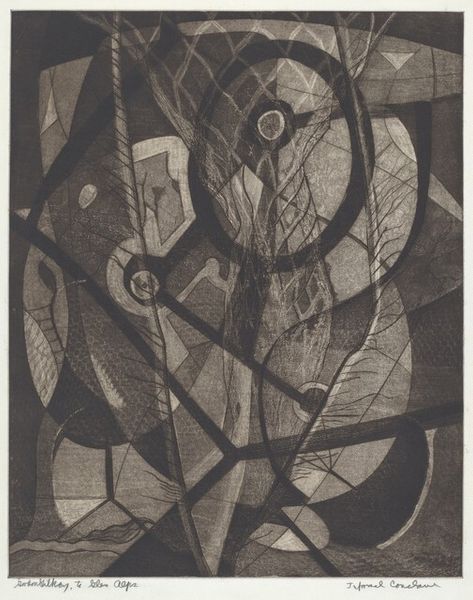
#
portrait
# print
#
figuration
#
genre-painting
#
realism
#
monochrome
Dimensions: Image: 280 x 341 Sheet: 331 x 495
Copyright: National Gallery of Art: CC0 1.0
Editor: Here we have Morton P. Traylor's "Minor with Lantern" from 1950, rendered as a print. The limited color palette, essentially a monochrome, gives it a rather somber, almost oppressive feel, despite the light emanating from the lantern. What stands out to you in this piece? Curator: The power of this work resides in its masterful arrangement of forms. Notice the interplay of light and shadow; the textures that create depth. The figure’s upward gaze directs our own vision and contributes a structural diagonal line that dominates the visual field. Do you notice how the angularity is resolved into balance by the massing of shapes at the lower-right corner? Editor: I see what you mean about the balance, the shapes around the lantern act as a counterweight. So the lantern itself is more than just a source of light. Curator: Precisely. While thematically relevant, it is primarily a formal device, its shape echoed and inverted in the composition's negative spaces. The linear details, are, arguably, also doing more than just depicting elements such as clothing, as the artist employs line as a formal element, which accentuates spatial recession, which further complicates the perspective. The face shows strain through form, through careful contrasts. The abstraction allows universality; we consider less *who* this figure is and instead find interest in *how* this is constructed. Editor: So, it's less about a literal representation and more about the relationships between the visual elements? It's all meticulously composed to guide our eyes and evoke specific feelings? Curator: Indeed. The print is not merely representational but a study in the language of form itself, a perfect realization of the abstract potential residing within figuration. Editor: I never really thought about how abstraction could work so strongly even within a portrait. Curator: Exactly! It makes you appreciate the technical and structural concerns an artist juggles in crafting something both beautiful and expressive.
Comments
No comments
Be the first to comment and join the conversation on the ultimate creative platform.
